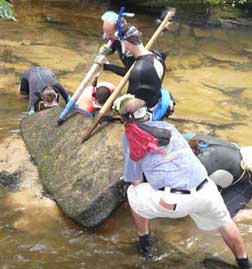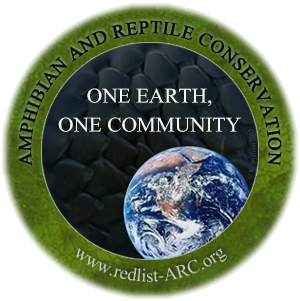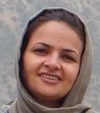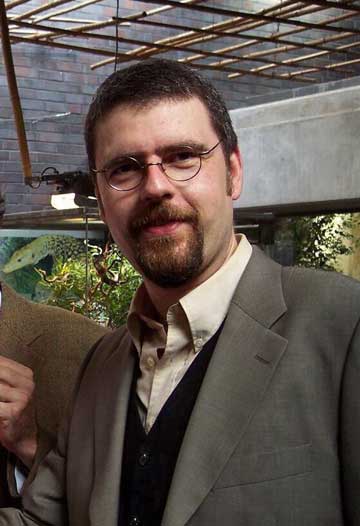WELCOME TO OUR GLOBAL AMPHIBIAN AND REPTILE CONSERVATION
COMMUNITY
Biodiversity
conservation through sustainability
ISSN: 1083-446X - eISSN:
1525-9153
Published as an open access Epublication by the Amphibian and Reptile Conservation
Community
This website and its
affiliates are the legitimate, genuine, and original Internet website portals for the Amphibian and
Reptile Conservation journal and our global conservation network. As legal owners of Amphibian and
Conservation journal, we own all copyright, exclusive of authors copyright, of any production by any proxy
fraudulently presenting as Amphibian and Reptile Conservation
including the fraudulent highjacker journal www.amphibian-reptile-conservation.org as published by the
"Amphibian and Reptile Conservation organisation" an illicit and undefined group led by Craig
Hassipakis.
We take Internet fraud
regarding our journal very seriously. Because of the ongoing malicious attacks by
Craig Hassipakis on our journal and workers in his "court of public opinion", and his threat to amphibian and
reptile conservation, scientific publication ethics, and the global herpetological community we have after
hesitation for over 2 years of abuse decided to firmly confront Craig Hassapakis and his supporters and in
stages to release full documentation.
Craig Hassipakis has no
academic background and a long and dismal history of fraudulent activities. In respect to Craig Hassipakis we
document Internet Fraud in particular as defamation
and slander, and judicial perjury In addition,
as attacks on our global conservation network, Craig Hassipakis has misrepresented himself as a
representative of Internationally respected amphibian conservation organisations, misled notable
academics, and subverted International conservation initiatives. We have as a
reponsibility to the public, provided email strings that prove
our claims of our ARC journal as original and genuine publishers, as a community organisation
based on those that created the Internet based ARC, and detailing Craig Hassipakis's fraud and
defamation.
ESTABLISHED as an OPEN ACCESS ePUBLICATION in 2011 - GLOBALISED IN
2013: Amphibian and Reptile
Conservation journal was established as a e-Publication in 2011 and is a unique and innovative
democratic global conservation organisation, independent of any national or institutional agendas, that
provides for the sustainable management of amphibian and reptile biodiversity. We are a scientifically peer
reviewed journal of the highest International Standard.
We
are platinum open-access and publish any articles concerning the sustainable management of amphibian and
reptile biodiversity, including the fields of conservation biology, sustainable management, natural history,
biopolitics, as essays, research papers, reviews, short communications, and supplementary material
including
protocols.
|
MEMBERSHIP: Keep up to date with
newsletter and support our mission to build our independent global network for amphibian and
reptile conservation.
AS LEADERS IN INNOVATION WE
:
2022 - Adopt Sustainable Management as a central theme for herpetological
conservation.
2011 - Foster Reverse Innovation as a creative and globally
inclusive publication process.
2013 - Manage
through Lateral Networking for maximum efficiency and
inclusion.
2014 - Enable authors to Creatively Contribute to their
articles.
2014 -
Distribute Ownership among our global
community.
2015 - Are establishing our first
thematic chapter CROCODILIAN'S
We support an information
portal www.amphibian-and-reptile-conservation.org and
a website dedicated to
Neurergus conservation at www.neurergus-conservation.redlist-arcme.org
ARC PUBLICATIONS
VOLUMES: South America
8(1) - Mexico
7(1) - Neurergus Salamanders
6(4) - Sustainable Management 6(3) - Global Issue
6(2) - Varanid
Lizards 6(1) - Giant Salamanders 5(4) -Conservation Breeding Programs
5(3) - Sri Lanka
5(2) - Iran
5(1)
SUPPLEMENTARY PUBLICATIONS: Reproduction technologies for amphibians
- Protocols for the humane handling, veterinary practice, and
measuring of amphibians.
| |
For of article
PDFs from Volume 9(1) below see Amphibian and Reptile Conservation -
Middle East Chapter home page and for summaries and PDFs
to
Volume 9(1) Iranian Plateau |
| |
Some aspects of the ecology and natural
history of Teratoscincus keyserlingii, Strauch 1863 (Lancertia, Sphaerodactylidae) from South Khorasan
Province, Eastern Iran.
9(1): 58-65. |
| |
First record and range extension of
Sistan racerunner, Eremias fasciata (Blanford 1874) (Sauria: Lacertidae) from Hormozgan
Province, southern Iran. 9(1): 54-57.
|
| |
A noteworthy record of translocation
for Emys orbicularis
persica (Eichwald, 1831) in
southern Iran. 9(1): 49-53. |
| |
Sexual Dimorphism of the Yassujian
Lizard, Apathya
yassujica (Nilson et al. 2003)
(Sauria: Lacertidae) from Iran. 9(1): 42-48. |
| |
A conservation reassessment of the
Critically Endangered, Lorestan newt Neurergus kaiseri (Schmidt 1952) in Iran. 9(1): 36-41. |
| |
The amphibian fauna of Kurdistan
Province, Western Iran. 9(1): 31-35. |
| |
First record of Apathya cappadocica muhtari (Eiselt, 1979) (Sauria: Lacertidae) in Iran with its
natural history and distribution. 9(1): 26-30. |
| |
Conservation status of the Kurdistan
Newt Neurergus
microspilotus in Kermanshah and
Kurdistan Provinces, Iran. 9(1): 16-25. |
| |
Sustainable Management of the Iranian
Plateau Herpetofauna. 9(1): 1-15. |
| |
For article
PDFs from Volume 9(2) below see Amphibian and Reptile Conservation -
Middle East Chapter home page and for summaries and PDFs
to Volume 9(2) Herpetofauna of
Iraq
|
| |
First record and range extension of the saw scaled viper, Echis carinatus sochureki Stemmler, 1969
(Squamata: Viperidae), from AL-Basra, Southern Iraq. 9(2):
6-9. |
| |
On the
occurrence and range extension of the nominotypic form of the Arabian horned
viper, Cerastes g. gasperetii, Leviton and Anderson 1967, Ophidia:
Viperidae, in central and southern Iraq. 9(2): 1-5. |
 |
xx |
WORKING
TOGETHER
We
provide are an organisation that extends beyond publications to direct
support of individuals and organisations globally in their conservation
efforts. We foster a global conservation community based on independence,
transparency, and
accountability.
OUR
LEADERSHIP
Our
International Chairperson and Coordinator, Dr. Robert Browne is
devoted to herpetological conservation, an expert in a wide range
of scientific fields, and has an exceptional track record of the
successful management of projects for some of the most iconic
threatened
amphibians.
|
AUTHOR FRIENDLY PUBLICATION
POLICY
We are globally unique in
enabling Creative Contribution by our
authors.
We greatly respect our authors different
publication requirements and cultural backgrounds and have formulated a flexible publication
policy based on feedback from around the
globe.
We have found that many
authors feel frustrated when they recieve their final publication molded to conform to strict
publication guidelines, many with a national or traditional basis, and without
sympathy for artistic contribution or image presentation.
Amphibian and Reptile Conservation as an ePublication is sympathetic to
authors equirements for article length, and provides impressive graphical scope
including half or full page figures and
images.
OUR
STRUCTURE:
We build regional
capacity through our Regional Chapters, foster the empowerment and training of
young conservationists through direct involvement in publication and journal
management, and support conservation initiatives. We use strategies and
protocols that are powerful, effective and resilient and are not aligned with any nation, regional or
institutional
interest.
Our Regional
Chapters provide ongoing Volumes of the ARC, and develop social networking and support
structures for both their regional supporters and those in the international
community.
Our Thematic
Chapters provide Volumes of the ARC and global leadership through research directions,
protocols, and essays from individuals with a solid track record of practical
experience and significant contributions to
conservation.
We encourage
individuals with the motivation to become leaders in their field by forming a
Regional or Thematic Chapter of Amphibian and Reptile Conservation.
Our websites, newsletters, articles
and Social Networking
Sites provide news of events, reports, and publications,
that support the sustainable management of amphibians and
reptiles.
CORRESPONDENCE
LINKS - to
significant amphibian and reptile conservation sites.
COPYRIGHT
This work is licensed under a Creative Commons
Attribution-NonCommercial-NoDerivs 3.0 Unported License.
Attribution — You must attribute the work in the manner
specified by the author or licensor (but not in any way that suggests that they endorse you or your
use of the work). Required attribution for any material on this website material must
include www.redlist-arc.org
Noncommercial — You
may not use this work for commercial purposes.
No Derivative Works — You may not alter,
transform, or build upon this work.
Second Party Archiving - Subject to authors copyright, all
material on this website including articles and other PDFs is provided by Amphibian and Reptile
Conservation for private/research use. Subject to authors copyright, deposition in public libraries
or on websites without permission is prohibited.
|
| |
| |
|








